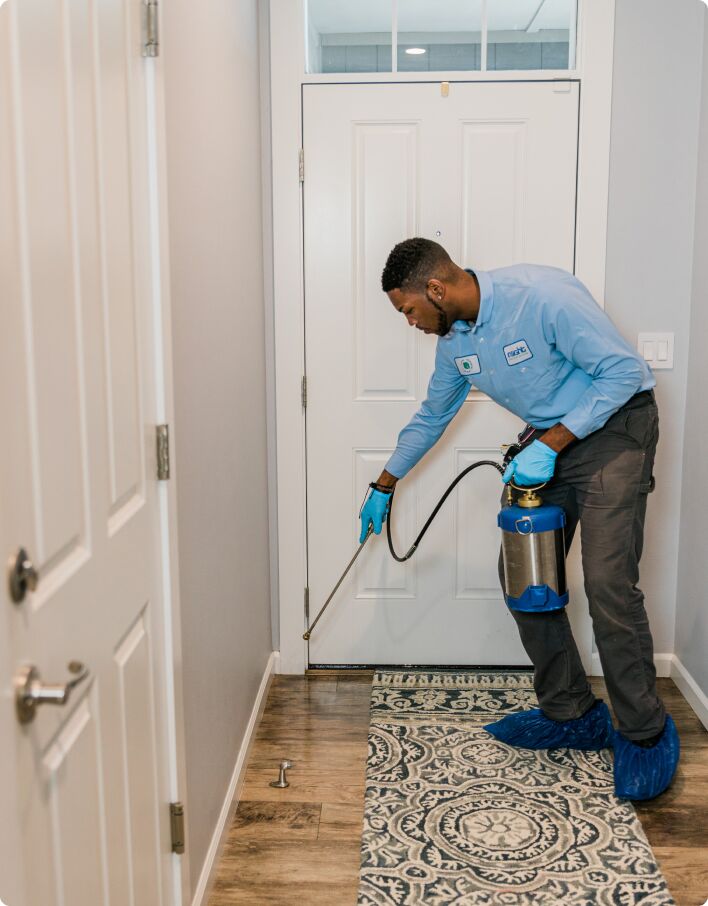Bed Bug Treatment Breakdown: Comparing Chemical Vs. Non-Chemical Solutions
In the world of pest control, specifically when handling the consistent issue of bed bugs, the option between chemical and non-chemical therapy options can be a pivotal one. Both strategies offer unique benefits and disadvantages, affecting elements such as performance, safety and security considerations, and overall cost. By checking out the nuanced information of each technique, a clearer understanding of which course to pursue in addressing a bed pest problem can be acquired.
Performance of Chemical Treatments
Chemical therapies for bed insect infestations have actually been widely identified for their quick and potent effectiveness in eliminating these insects. When thinking about the effectiveness of chemical therapies, it is vital to understand that they can give a quick and complete remedy to a bed insect problem.
Additionally, chemical treatments have the benefit of using residual results, meaning that they can remain to eliminate bed bugs also after the initial application. This residual action is especially beneficial in combating any kind of prospective re-infestations. Additionally, the quick action of chemical treatments can bring alleviation to individuals dealing with serious bed pest infestations, permitting them to restore control of their home swiftly.
Safety And Security Worry About Chemical Solutions
One critical facet that needs cautious factor to consider when making use of chemical options for bed pest therapy is ensuring the safety of residents and the environment. Exposure to particular chemicals made use of in bed bug therapies can lead to respiratory problems, skin irritability, or other negative responses, especially in people with pre-existing problems or sensitivities.
In addition, the environmental influence of chemical services is an additional considerable consideration. Some chemicals used in bed insect therapies may be unsafe to beneficial insects, wild animals, and ecological communities if they leach into the soil or water supply. It is important to use chemical therapies deliberately, following safety guidelines, and taking into consideration much less toxic options to minimize these risks and guarantee the risk-free and reliable administration of bed insect problems.
Benefits of Non-Chemical Techniques
Taking into consideration the possible safety and security problems and ecological effect connected with chemical options for bed insect therapy, checking out non-chemical methods presents an appealing alternative with several unique benefits. Non-chemical methods offer a more secure choice for households, particularly those with people, children, or family pets conscious severe chemicals. These techniques remove the threats of direct exposure to poisonous materials, decreasing the potential for damaging wellness impacts. Additionally, non-chemical therapies are environmentally friendly, as they do not add to air or water contamination, making them a sustainable selection for insect control.
Additionally, non-chemical remedies can be effective in targeting bed pests, including hard-to-reach locations where chemical treatments might not permeate. Methods such as warm treatment, vacuuming, vapor cleaning, and cushion coverings provide complete obliteration without the usage of dangerous chemicals. Additionally, non-chemical techniques can be less turbulent, requiring very little preparation and enabling quicker reentry right into treated locations. On the whole, going with non-chemical bed bug treatment methods not just focuses on safety and ecological defense however additionally makes sure reliable and extensive pest control.
Limitations of Non-Chemical Treatments

In addition, non-chemical therapies usually need several applications to accomplish effective removal. This can be taxing and might not Get More Info constantly assure complete elimination of all bed pests and their eggs, particularly in surprise or hard-to-reach locations.
Additionally, the success of non-chemical therapies greatly relies upon correct execution and thoroughness, which can be testing for people without expert expertise. Inadequate application of non-chemical methods might cause incomplete eradication, bring about relentless infestations and the demand for additional treatments.
As a result, while non-chemical treatments have their advantages, it is vital to acknowledge these read this article limitations and consider them when identifying one of the most reliable technique for managing bed insect invasions.
Expense Comparison: Chemical Vs. Non-Chemical Options
Given the constraints associated with non-chemical treatments, an important aspect to assess in the context of bed insect administration is the cost contrast in between chemical and non-chemical choices. Chemical treatments usually involve the application of pesticides by experts, which can range from $250 to $900 per room, depending on the extent of the invasion and the size of the location to be treated. In comparison, non-chemical treatments like warmth therapy or steam can be more pricey, with expenses varying from $1,000 to $6,000 for a whole home. While the initial cost of chemical therapies may seem reduced, multiple treatments may be called for to completely eradicate the invasion, potentially raising the general price. On the other hand, non-chemical alternatives might offer an extra environmentally friendly and sustainable service, although they can be cost-prohibitive for some people. Ultimately, when considering the cost of bed insect therapy choices, it is essential to evaluate the in advance expenditures my response against the effectiveness and long-lasting sustainability of the picked method.
Final Thought

Considering the prospective safety and security concerns and environmental impact connected with chemical options for bed pest treatment, exploring non-chemical techniques offers a promising alternative with a number of distinctive benefits.Offered the constraints associated with non-chemical treatments, a crucial aspect to assess in the context of bed bug administration is the expense comparison between chemical and non-chemical choices. In contrast, non-chemical treatments like warm therapy or heavy steam can be a lot more costly, with prices varying from $1,000 to $6,000 for a whole home. While the preliminary expense of chemical treatments may seem lower, multiple therapies might be called for to totally get rid of the infestation, potentially increasing the overall expense.In final thought, when contrasting chemical and non-chemical bed bug therapy options, it is essential to consider performance, safety and security, advantages, limitations, and price.
Comments on “Reliable A1 Bed Bug Exterminator Charlotte - Get Rid of Bed Bugs Fast”